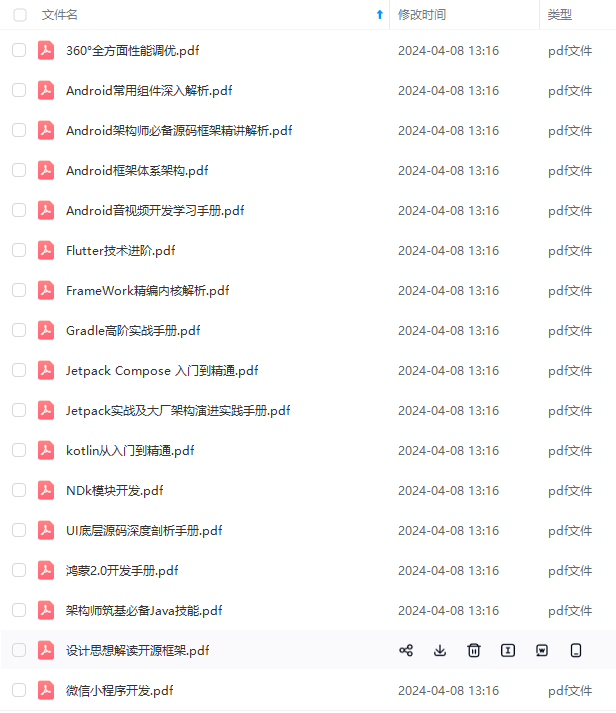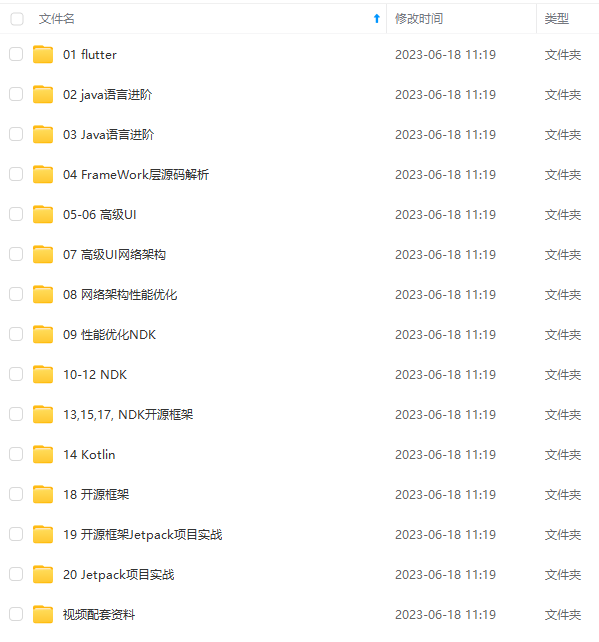//java
switch(a){
case 0 : c = 5; break;
case 1 : c = 4; break;
default : c = 20 ;
}
//kotlin
when(a){
0 -> c = 5
1 -> c = 4
else -> c = 20
}
when 多个值相同 可用,间隔 如下所示:
when(a){
0 , 2 -> c = 5
1 -> c = 4
else -> c = 20
}
//也可写为
c = when(a){
0 , 2 -> 5
1 -> 4
else -> 20
}
try…catch 也是表达式,可直接将变量提取使用
//java
try{
c = a/b;
}catch(Exception e){
e.printStactTrace();
c = 0;
}
//kotlin
c = try{
a/b
}catch(e:Exception){
e.printStactTrace()
0
}
======================================================================================
运算符operator,kotlin支持运算符重载,但是运算符的范围仅限官方指定的符号:官网路径
用于重载运算符的所有函数都必须使用operator关键字标记。如下简单的demo所示:
// 一个简单的数据类
data class Foo(val x: Int, val y: Int) {
operator fun plus(other: Foo) : Foo = Foo(x + other.x, y + other.y)
}
fun main(args: Array) {
// 使用的时候
val f1 = Foo(10, 20)
val f2 = Foo(30, 40)
// 直接用+运算符代替plus函数,事实上会调用plus函数
println(f1 + f2) // 打印内容为Foo(x=40, y=60)
}
也可以使用扩展函数对运算符进行重载,如下所示:
// 自定义复数运算符 重载运算符
/**
-
@param real 实部
-
@param image 虚部
*/
class Complex(var real: Double, var image: Double) {
override fun toString(): String {
return “real: r e a l i m a g e : real image: realimage:{image}i”
}
}
// 使用扩展方法 进行运算符重载
operator fun Complex.plus(other: Complex): Complex {
return Complex(this.real + other.real, this.image + other.image)
}
operator fun Complex.plus(other: Double): Complex {
return Complex(this.real + other, this.image)
}
operator fun Complex.plus(other: Int): Complex {
return Complex(this.real + other, this.image)
}
operator fun Complex.minus(other: Complex): Complex {
return Complex(this.real - other.real, this.image - other.image)
}
fun main(){
// 运行 自定义复数例子
val complex1 = Complex(3.0, 2.0)
val complex2 = Complex(2.0, 3.0)
//使用
println((complex1 + complex2).toString())
println((complex1 + 1).toString())
println((complex1 + 1.2).toString())
println((complex1 - complex2).toString())
}
除了上述的加减之外,kotlin还支持其他类型的运算符重载,具体可上,官网查看。
Demo:为String实现四则运算
// 为string实现四则运算
// minus 减
operator fun String.minus(right: Any?): String {
val str = right?.toString() ?: “”
return this.replaceFirst(str, “”)
}
// times
operator fun String.times(right: Int): String {
return (1…right).joinToString(“”) { this }
}
// div 除
operator fun String.div(right: Any?): Int {
val str = right?.toString() ?: “”
// windowed 返回给定大小的窗口的快照列表,这些快照沿着给定步骤的字符序列滑动,其中每个快照都是一个字符串。 count 返回为true的个数
return windowed(str.length, 1) {
it == str
}.count { true }
}
fun main() {
val str = “hello world world”
// minus
println(str - “hello”)
// times
println(“*” * 20)
// div
println(str / “l”)
}
中辍表达式使用infix标记
那什么是中辍表达式呢?
在第一章学习的时候,我们知道Pair是一个对象 包含两个值,frist以及second 。源码如下所示:
public data class Pair<out A, out B>(
public val first: A,
public val second: B
) : Serializable {
/**
- Returns string representation of the [Pair] including its [first] and [second] values.
*/
public override fun toString(): String = “($first, $second)”
}
如何快速生成Pair呢? 如下所示
val pair1: Pair<Int, Int> = 2 to 3
这个to就是一个中辍表达式,定义源码如下:
public infix fun <A, B> A.to(that: B): Pair<A, B> = Pair(this, that)
仿照上方源码,我们自定义一个中辍表达式,如下:
// 定义中辍表达式
infix fun String.rotate(count: Int): String {
val index = count % this.length
return this.substring(index) + this.substring(0, index)
}
fun main(){
// 使用自定义的中辍表达式
val s = “helloworld” rotate 5
println(s)
}
//运行结果为
worldhello
==============================================================================
kotlin普通函数以及kotlin匿名函数对比
//一个普通函数
fun func(){
println(“hello”)
}
//一个匿名函数
fun(){
println(“hello”)
}
//匿名函数的引用
val func = fun(){
println(“hello”)
}
//对引用的匿名函数调用
func()
kotlin匿名函数的类型与普通函数一致
val func : () -> Unit = fun(){
println(“hello”)
}
示例如下所示(其中java的实例,指的是从java8开始):
//java
Runnable lambda = () -> {
System.out.println(“hello”);
}
//kotlin
val lambda = {
println(“hello”)
}
lambda表达式的类型
//类型1 入参Int 无返回
val f1 : (Int) -> Unit = {
p:Int ->
println§
}
//类型2 入参Int 返回String
val f2 : (Int) -> String= {
p:Int ->
println§
“hello”
}
//类型3 入参Int,String 返回String
val f3 : (Int,String) -> String= {
p:Int,s:String ->
println(“ p p ps”)
“hello”
}
lambda表达式省略参数的写法,如果只有一个参数,可使用it代替
val f : Function1<Int,Unit> = {
println(it)
}
最后
自我介绍一下,小编13年上海交大毕业,曾经在小公司待过,也去过华为、OPPO等大厂,18年进入阿里一直到现在。
深知大多数初中级Android工程师,想要提升技能,往往是自己摸索成长,自己不成体系的自学效果低效漫长且无助。
因此我收集整理了一份《2024年Android移动开发全套学习资料》,初衷也很简单,就是希望能够帮助到想自学提升又不知道该从何学起的朋友,同时减轻大家的负担。




既有适合小白学习的零基础资料,也有适合3年以上经验的小伙伴深入学习提升的进阶课程,基本涵盖了95%以上Android开发知识点!不论你是刚入门Android开发的新手,还是希望在技术上不断提升的资深开发者,这些资料都将为你打开新的学习之门
如果你觉得这些内容对你有帮助,需要这份全套学习资料的朋友可以戳我获取!!
由于文件比较大,这里只是将部分目录截图出来,每个节点里面都包含大厂面经、学习笔记、源码讲义、实战项目、讲解视频,并且会持续更新!
也去过华为、OPPO等大厂,18年进入阿里一直到现在。**
深知大多数初中级Android工程师,想要提升技能,往往是自己摸索成长,自己不成体系的自学效果低效漫长且无助。
因此我收集整理了一份《2024年Android移动开发全套学习资料》,初衷也很简单,就是希望能够帮助到想自学提升又不知道该从何学起的朋友,同时减轻大家的负担。
[外链图片转存中…(img-VgeR2P7O-1715680588997)]
[外链图片转存中…(img-VAzdDQoo-1715680588999)]
[外链图片转存中…(img-Guzfz7cd-1715680589000)]
[外链图片转存中…(img-IVtx21bf-1715680589001)]
既有适合小白学习的零基础资料,也有适合3年以上经验的小伙伴深入学习提升的进阶课程,基本涵盖了95%以上Android开发知识点!不论你是刚入门Android开发的新手,还是希望在技术上不断提升的资深开发者,这些资料都将为你打开新的学习之门
如果你觉得这些内容对你有帮助,需要这份全套学习资料的朋友可以戳我获取!!
由于文件比较大,这里只是将部分目录截图出来,每个节点里面都包含大厂面经、学习笔记、源码讲义、实战项目、讲解视频,并且会持续更新!






















 1853
1853

 被折叠的 条评论
为什么被折叠?
被折叠的 条评论
为什么被折叠?








